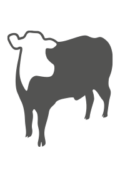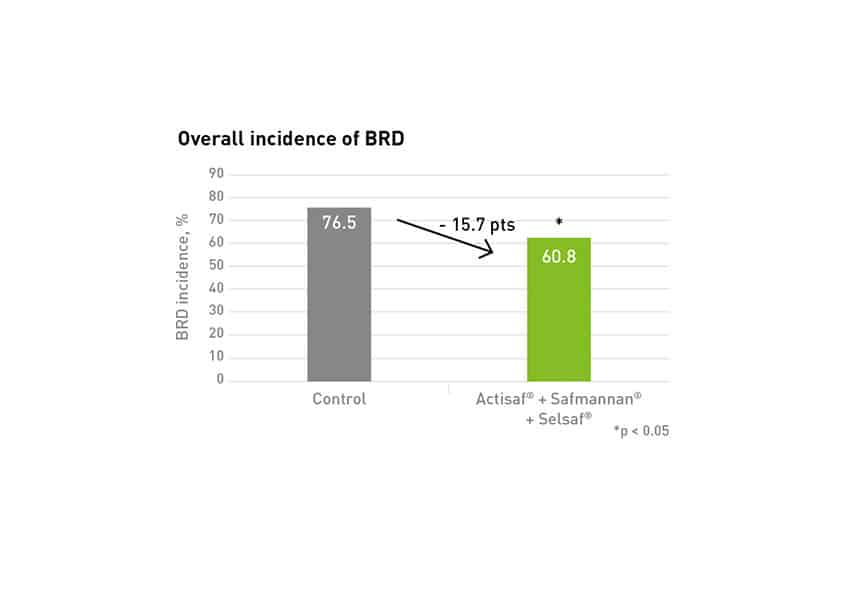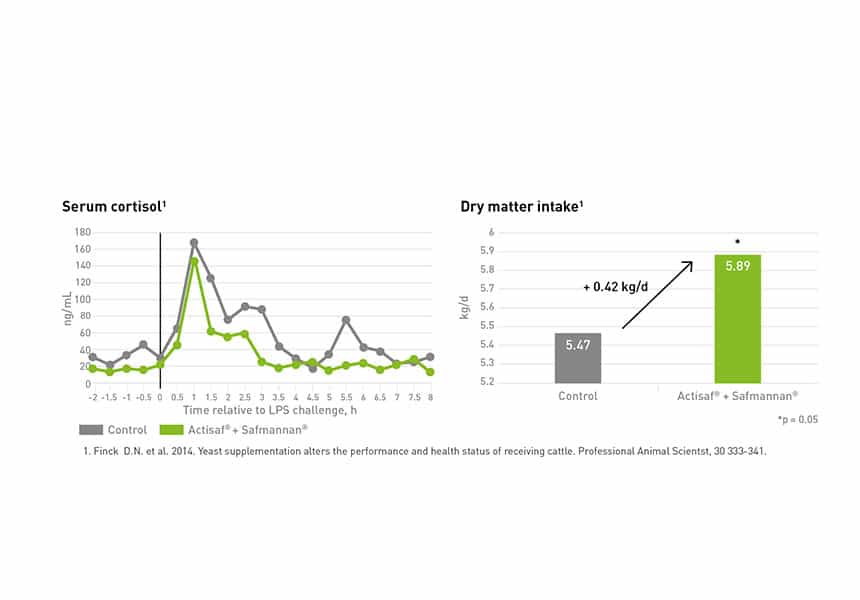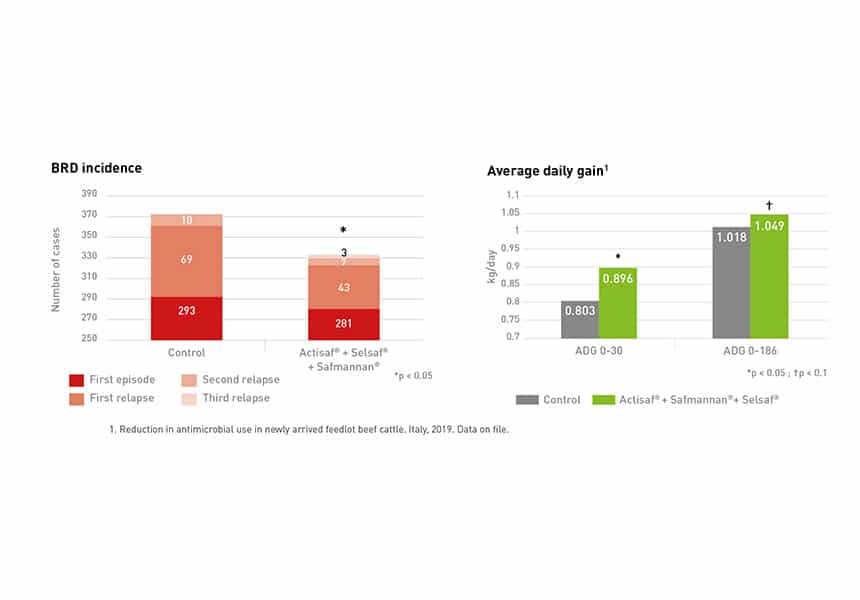Stress and immunity in receiving cattle
One of the most important steps in feedlot management is how to properly receive new cattle. Most calves arrive after long transportation with restricted feed. An effective receiving programme minimises the incidence of disease and gets cattle feeding. The impact of nutrition on immunity is highest during this period, and the efficacy of any vaccination programme depends upon the ability of the calf’s immune system to respond adequately.
Given long transport times, feed and water restrictions, the rumen of arriving calves will be functioning less efficiently than normal. At this time, they face high stress and a risk of BRD and digestive disorders. Bovine Respiratory Disease (BRD) is by far the most important disease found in newly received cattle, with the highest economic impact.
Management of high-risk calves after arrival is critical to achieve a healthy, successful transition to the new environment. The typical management recommendation is to provide an abundant supply of clean water, good-quality hay, and a clean, dry place to bed down.

Bovine Respiratory Disease (BRD)
BRD is the leading cause of morbidity and mortality in feedlots, with 16% of cattle in the US requiring BRD treatment during the feeding period (USDA, 2013). While BRD is a multifaceted disease, several known viral and bacterial pathogens have been reported as causal factors, including bovine herpesvirus-1 (BHV-1), BVD virus, BRSV, and Mannheimia haemolytica.
Despite modern vaccination protocols and vaccines, BRD is still the most prevalent disease, causing losses of carcass weight and quality, while increasing medication costs and mortalities. Good practice shows that animals vaccinated prior to arrival are less likely to get BRD.
Probiotic and postbiotic supplementation in newly received cattle
Actisaf® and Safmannan® supplementation has been shown to reduce stress and inflammation response to LPS (lipopolysaccharide) in early receiving beef cattle. To mimic infectious disease and systemic inflammation, receiving beef steers were given an intravenous challenge with E. coli endotoxin (LPS – lipopolysaccharide).
Animals receiving Actisaf® + Safmannan® showed significantly lower rectal temperatures. They also responded with lower serum cortisol levels, showing lower stress levels and reduced inflammation.
Positive effect of selsaf® on the antioxidant capacity
Another important requirement for adequate immune response is the antioxidant capacity of the blood where selenium is one of the most important minerals, playing a crucial role in glutathione peroxidase (GPx). Supplementing Selsaf®, an advanced and innovative source of organic selenium, to receiving beef cattle has shown a positive effect on the antioxidant capacity of the animal, increasing antibody titers to BRD vaccination.
Reduction of antimicrobial use in newly arrived feedlot beef cattle
Phileo by Lesaffre performed a study to evaluate the performance and economic efficacy of supplementing yeast probiotics and postbiotics in high risk receiving beef cattle.
Supplementing rations with Actisaf®, Safmannan® and Selsaf® achieved significantly higher daily weight gain (DWG) during the receiving phase and tended to maintain better weight gain throughout the whole finishing period.
Considering the cost of supplementation, cost of BRD treatment and the price of 1kg body weight at slaughter, supplementation improved the economic performance of the animals, showing an ROI of 3:1.
















